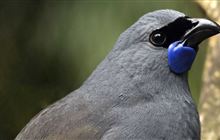Hunters and DOC align on pest management
Archived content: This media release was accurate on the date of publication.
Introduction
DOC is talking with the Game Animal Council and the New Zealand Deerstalkers' Association to understand hunter concerns about the potential impacts of pest control operations on deer populations.Date: 22 July 2016
DOC has been monitoring steadily increasing pest levels that have triggered the need for a series of large scale aerial pest control operations.
DOC began talking with the Game Animal Council (GAC) and the New Zealand Deerstalkers' Association (NZDA) to understand hunter concerns about the potential impacts of pest control operations on deer populations.
“Discussion between the three parties started in March.” says DOC’s Director of Operations Martin Kessick “We needed to spend time showing the hunters the benefits to native species of the use of aerial 1080 during the last major pest irruption.”
Don Hammond, GAC Chairman says “The hunters understand the benefits of pest control but if DOC is to continue operations, they needed to hear hunter concerns and have those concerns taken into account developing appropriate mitigation for game animals in some areas.”
“Between the three parties, we put all our cards on the table and developed open clear dialogue which has helped to reinforce the relationship.”
The Battle for our Birds project protects native species that are threatened by pest irruptions. Without predator control some species such as mohua, kākā, orangefronted parakeet/kākāriki karaka, rock wren/pīwauwau, and bats/ pekapeka could suffer heavy losses and become extinct in some places. The use of aerial 1080 is a vital tool for managing pests such as possums and rats but may have detrimental effects on game animal populations.
“Hunters are conservationists and we support the intent of the Battle for our Birds though we have reservations about the use of aerial 1080” says Bill O’Leary, NZDA President. “But we value the game animals that draw us to the hills and the consultative process has achieved some protection for key animal populations.”
NZDA and GAC engaged with their own members to identify the areas of value to them that would be part of the Battle for our Birds programme and suggestions were made about mitigation options.
Three areas of importance to hunters were identified and DOC will use deer repellent baits for operations at those sites. They are the Cobb Valley in Kahurangi National Park, Blue Mountains near Balclutha and Dart and Caples valleys at the head of Lake Wakatipu.
Operations will commence at those locations in the first fine weather window sometime after early August.
“This is a very promising start.” says Kessick “We look forward to continuing to work together.”
Predator response consultation
Download the Battle for our Birds predator response consultation document from the Game Animal Council and New Zealand Deerstalkers' Association:
Background information
- DOC has been working with the Game Animal Council and New Zealand Deerstalkers' Association to address their concerns about the impact of 1080 use on deer in areas of particular value for hunting.
- DOC will use deer repellent in 1080 cereal bait at three Battle for our Birds pest contol sites this year to mitigate the risk to deer in valued hunting areas in the Cobb valley in Kahurangi National Park, Dart and Caples valleys in Mount Aspiring National Park and Blue Mountains in Southland.
- Use of deer repellent in these areas will not compromise pest control operations to protect vulnerable populations of native species from rat and stoat plagues caused by forest seeding.
- Battle for our Birds is targeted at protecting kiwi, kaka, kea, whio/blue duck, mohua/yellowhead, kākāraki/orange-fronted parakeet, rock wren, long and short tailed bats and giant snails from introduced predators.
- Aerial 1080 pest control operations have been confirmed for 19 sites covering 720,000 hectares of high value areas for our most vulnerable populations of these native species.
- The bulk of these areas are in South Island beech forests in Kahurangi National Park, South Westland, western Otago, Fiordland and Southland but also include sites in central North Island, Taranaki and the Tararua Range.
- Use of 1080 applied by air will be backed up by ground control over about 70,000 hectares using toxins and traps.
- A further 10 priority sites covering about 200,000 hectares are on close watch and will receive aerial 1080 pest control if rodent numbers reach thresholds of damage to native species.
Contact
For media enquiries contact:
Email: media@doc.govt.nz

